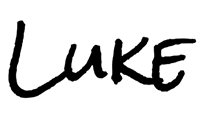I’m a huge fan of the blues scale on bass. It can work nearly in so many different situations, it sounds great, and it’s pretty easy to get started.
However, it’s also super easy to sound horrible using it, even if you use the ‘right’ notes.
How can this be?!?!
Well it turns out that not all of the notes of the blues scale are created equal. When someone treats them as though they WERE equal though, it’s a dead giveaway that they’re a total beginner. It just sounds amateur-ish…
Thankfully, as you’ll see in this video, there’s a very simple fix that will elevate your bass solos or bass fills from the beginner level all the way to the pro level – and that’s without learning any extra licks.
If playing bass solos and improvising is something that you want to develop for yourself, then you’re going to need more sounds than just the blues scale.
As I said in the video, using only the blues scale is the 2nd big mistake that beginner bass players make. If you’re only using that one sound, it gets super boring – and very quickly.
You need to use other sounds as well as well as the blues scale on bass. This means you need to know what these other sounds are, how to play them, and where to use them.
It doesn’t have to be difficult though. It’s actually quite simple for you with my free guide to the modes that you can download right here.
In the guide, you’ll learn everything about how the modes are made WITHOUT over-complicating anything. You’re NOT going to come away from it more confused than when you started, and it will tell you exactly where and how to use all of the modes.
It’ll clear up a lot of the confusion that can surround them and make it super clear on exactly how to use them. Once again, it’s completely free and I want you to have it, so sign up on right there and I’ll send it straight to your inbox.



I used to listen in at my dad’s band practice and I have loved the sound of the bass and how it seems to move the ground. I’m still practically brand new but get super excited about becoming a good bassist. Thanks for the videos, I can’t wait to learn everything.
Awesome Jonathan! It’s great to have you with me. Let me know how I can help – I’m more than happy to answer any questions you have.
Hello luke
Thank you for this and iv downloaded the you book .
My question is yes with the blues scale you can use any of those notes but they dont all sound right
What i would like to no is when do you break of on say a 12 bar blues and how do you no which of the blues scale you should use may sound daft but i play the straight 12 GBD CEG GBD DF#A but when should you breakout in that and wear too hop this dosnt sound daft thank you
Edwin
Hey Edwin – good question. It looks like you’re playing a G blues with that chord progression you typed out and if that’s the case, then the G blues scale is a good choice, but you could also experiment with the E blues scale – that can also be cool.